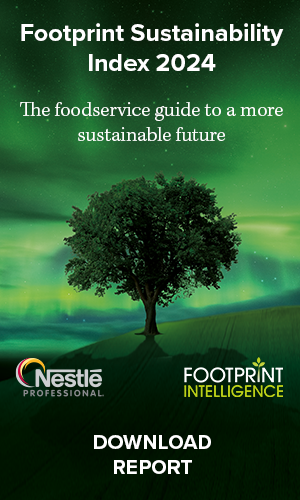Warning: this month’s column is full of c-words, including the one that businesses fear most. By David Burrows.
Here at The Package we love going round in circles (closed loops and all that) and engaging in a little corporate baiting from time to time. So we start this month with a report from Grist, a not-for-profit online magazine dedicated to climate change: ‘How the circular economy went from environmental dream to marketing buzzword’.
The focus is the US Circularity 2023 conference, at which there was a lot of attention on recycling of plastics. Can these materials really be circular? It’s worth reading both the article and the organiser GreenBiz’s response but it boils down to greenwashing versus the “fatalistic attitudes” of NGOs, and a debate on both how far we need to go and how fast.
Calls for a clearer definition of the circular economy ring loud – music to the ears of academics. In 2017, researchers in the Netherlands analysed 114 definitions in a bid to cut through what has previously been cast as “scholarly bullshit”. They found a variety of understandings and some definitions that mistook the circular economy as recycling; they warned this could result in the concept “eventually collapsing or ending up in conceptual deadlock”.
Did they foresee the concerns of some of those attending Circularity 2023? They certainly describe a lack of attention on systemic shifts and the failure to recognise business models or consumers as enablers of the circular economy. Ask those who have followed this closely in the intervening years and there is frustration that circular models (proper) haven’t really got going yet.
Definitions are evolving in a promising way, though. Revisiting their analysis this year, in an article for the journal Resources, Conservation and Recycling, the researchers found more definitions (221) but comprehension of the circular economy was “both more consolidated and more differentiated” than previously reported. As one author described it: the trunk of the CE tree has strengthened, while various new leaves have appeared. Consensus has grown regarding the core principles underpinning the circular economy, the academics said, with 70–80% of articles recognising ‘reuse’ and ‘recycle’ as the two fundamental principles.
Forgotten fruits
This is good but not great news. Reduction is the best fruit to pick on this particular tree. It sits at the top of the waste hierarchy and should be prioritised over anything else. As the European Parliament notes in its definition: the circular economy implies reducing waste to a minimum.
Academics love a good definition debate but for Libby Peake at Green Alliance, a think tank, reduction has to be at the heart of the circular economy. “Recycling is the last thing you want to do,” she says, with the focus on waste minimisation and optimisation of (dwindling) resources. And that means looking at consumption – a concept those corporates are less eager to shout about. Even environmental groups are frightened by the idea, wrote Peake in a blog earlier this month.
According to the UK Environmental Funders Network, grants from UK foundations and lottery sources for environmental work tend to overlook the issue. As Peake describes, they go for “what is winnable within the current framework”, which makes sense in some ways but is a dangerous gamble in others. Tinkering around the edges of business as usual certainly won’t help us reach net-zero, and the role of resource efficiency in getting there is too often underplayed.
Indeed, I dug out a 2020 report by UNEP’s International Resource Panel recently. “Materials are vital to modern society, but their production is an important source of greenhouse gases (GHGs),” the summary notes. “Emissions from the production of materials increased from 5GtCO2e in 1995 to 11GtCO2e in 2015, with their share of global emissions rising from 15% to 23%.” Which as you probably know, puts it roughly on a par with the emissions footprint from agriculture, forestry and land-use change.
Material efficiency strategies could have a massive role in cutting emissions, the authors explain, across everything from cars and homes to packaging and manufactured goods. And the most promising strategy comes from the consumption side – more intensive use. “[…] there is a great opportunity to reshape our production and consumption systems in ways that respect planetary boundaries and support societal wellbeing.”
Coffey and cups
Will governments dare go there at the upcoming COP28 talks in UAE? It’s unlikely. Here in the UK, the environment secretary Therese Coffey apparently doesn’t like the term circular economy because it’s not “friendly” enough for the public, according to one policy expert I spoke to. Instead she talks about “sustainable use of resources” in speeches, and is confident a series of voluntary agreements rather than legally-binding targets and informed policies can effectively reduce waste.
A cynic might say she doesn’t like recycling either. Coffey has offered little in the way of resource policies since heading back to Nobel House as Defra secretary 12 months ago. Celebrating her anniversary, she appeared in front of the Efra committee and was asked about the deposit return schemes that have been severely delayed.
Coffey has managed to finally present plans for more consistent recycling collections. Businesses, schools and hospitals, must collect the same waste streams for recycling including paper and card, plastic, glass and metal. They will also have to arrange for separate collection of food waste. There is much to unpick, which we will as the dust settles (there’s no rush as the new rules are from 2025 onwards).
A couple of initial points of interest relate to laminated fibre packaging and compostables. Both have become incredibly popular on the back of the ‘all plastic is bad’ movement and accompanying single-use plastic bans, yet both appear to have been disregarded as ‘recyclable’ within the new system. Laminated paper is deemed not recyclable but does this include card, wonders the Foodservice Packaging Association?
The Biobased and Biodegradable Industries Association also pointed out a couple of errors in the executive summary. These related to decisions around caddy liners and composting of anaerobic digestate that were contrary to the findings in the original consultation. They have since been removed and the bottom line is that Defra has made a conscious decision to go against the grain of the consultation findings. Which is par for the course these days.
New packaging regulations are also afoot in the EU. Last week the European Parliament environment committee (ENVI) added its two pennies to the Packaging and Packaging Waste Directive (PPWR). These are the rules that have the likes of McDonald’s and the European Paper Packaging Alliance in a sweat.
There are wide-ranging targets, rules and restrictions (including on chemicals) under the proposals but the foodservice and hospitality sector is most closely watching Article 22, which is a ban on single-use packaging, including that filled and consumed on the premises. It got through the vote, but only just (41 to 39). “To promote the circularity and sustainable use of packaging, reusable packaging and systems for re-use should be incentivised,” the current regulation notes.
The EPPA is furious at being forced down the reusable packaging route. “Forcing the widespread adoption of reusable packaging in the foodservice sector will result in a rise of up to 1500% in the volume of rigid plastic packaging, causing increased water stress, CO2 emissions and plastic pollution while costing up to €20bn and increasing complexity for consumers and business owners,” said DG Matti Rantanen. He wants to see “real-world data” used in a “science-based” approach (I bet he does given the EPPA’s recent ‘research’ efforts).
It’s dark in the woods
“Nothing has been won yet,” a campaigner tells me, as she prepared for industry to lobby harder still for an amendment that would see only single-use plastic banned for dining in occasions.
Moreover, continued and indeed increased reliance on paper is regarded as a looming environmental disaster. “We are really worried,” Sergio Baffoni, a campaigner with the Environmental Paper Network told me recently. “The paper industry is a bit like magic – it just keeps growing.” Its darker side is slowly entering the spotlight.












